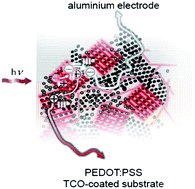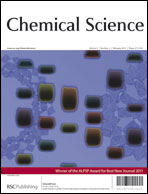Solution processed polymer/fullerene blend films are receiving extensive attention as the photoactive layer of organic solar cells. In this paper we report a range of photophysical, electrochemical, physicochemical and structural data which provide evidence that formation of a relatively pure, molecularly ordered phase of the fullerene component, phenyl-C61-butyric acid methyl ester (PCBM), may be the key factor driving the spatial separation of photogenerated electrons and holes in many of these devices. PCBM crystallisation is shown to result in an increase in its electron affinity, providing an energetic driving force for spatial separation of electrons and holes. Based upon our observations, we propose a functional model applicable to many organic bulk heterojunction devices based upon charge generation in a finely intermixed polymer/fullerene phase followed by spatial separation of electrons and holes at the interface of this mixed phase with crystalline PCBM domains. This model has significant implications for the design of alternative acceptor materials to PCBM for organic solar cells.

You have access to this article
 Please wait while we load your content...
Something went wrong. Try again?
Please wait while we load your content...
Something went wrong. Try again?


 Please wait while we load your content...
Please wait while we load your content...